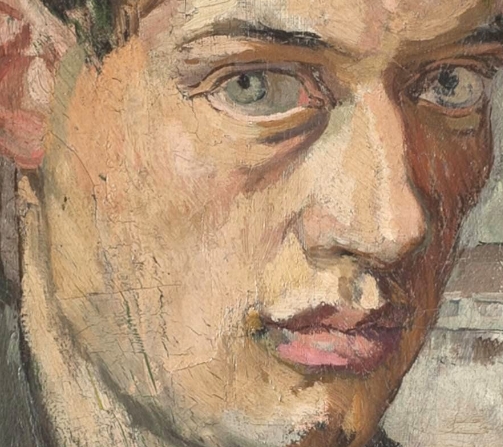Duncan Grant was a prominent figure in the Bloomsbury Group, a circle of influential artists, writers, and intellectuals in early 20th century England. One of Grant’s most notable works is his self-portrait, which offers a glimpse into his life and artistry.
A Glimpse into His World
In his self-portrait, Grant is depicted as a dapper young man with a thoughtful expression. He is dressed in a dark suit and tie, with a hint of a smile playing on his lips. The background of the portrait features a simple, abstract design that draws the viewer’s eye to Grant’s face.
Grant’s self-portrait captures the essence of the Bloomsbury aesthetic – a melding of intellect, creativity, and individuality. The portrait reflects his interest in modern art and his experimentation with line, color, and form.
Exploring Grant’s Artistic Style
Grant was known for his bold use of color and his loose, expressive brushwork. His paintings often featured dynamic compositions and lively, atmospheric settings. In his self-portrait, Grant’s use of light and shadow creates a sense of depth and dimension, while his confident brushstrokes convey a sense of self-assurance.
Grant’s self-portrait also reveals his interest in portraiture and figure painting. His ability to capture the essence of his subject, whether it be himself or someone else, is a testament to his skill as an artist.
A Legacy of Innovation
Grant’s self-portrait serves as a testament to his enduring legacy as an artist. His work continues to inspire and influence contemporary artists, who admire his modern approach to painting and his fearless experimentation with style and technique.
Through his self-portrait, we are able to explore the life and artistry of Duncan Grant – a pioneering artist whose work continues to captivate and inspire audiences around the world.



